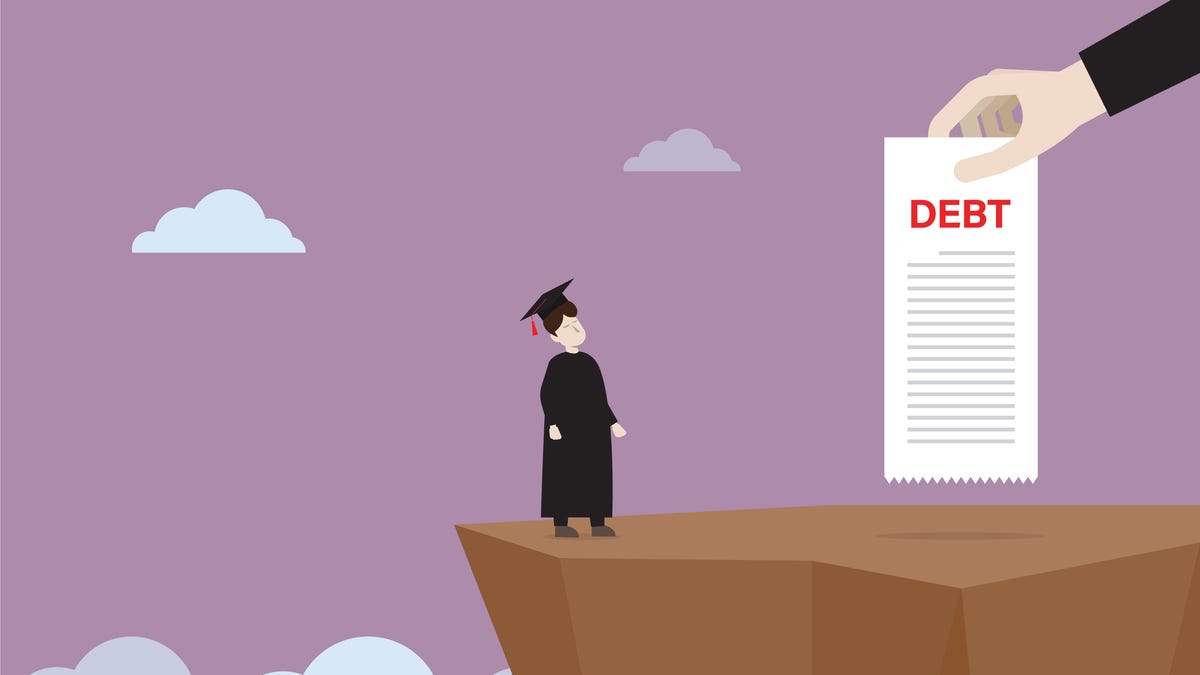
The US House of Representatives voted in favor of the Biden-McCarthy debt ceiling plan Wednesday night to keep the country from a default crisis. It received bipartisan support with a vote of 314-117, and it’s making its way to the Senate on Thursday.
While the deal is focused on raising the debt ceiling, it also includes changes to public programs like medical care for veterans and food assistance for low-income households. The deal will also end a pause on federal student loan repayments that started during the COVID-19 pandemic.
The bipartisan deal calls for student loan borrowers to start repaying loans as soon as Aug. 30. While this timeframe was part of the president’s plan laid out last November, there’s now little doubt borrowers will need to start paying their loans again. The text in the deal prevents the Education Secretary from initiating another pause.
More than 43 million Americans owe a total of $1.73 trillion in student loan debt, according to the Federal Reserve. The average amount owed is $37,338 and the average monthly payment is $337. Student loan debt has been a growing problem as younger borrowers find themselves hampered financially by their payments preventing them from proceeding with major life events like getting married or buying a home.
Here’s how the debt ceiling deal will affect student loans and what you can do to prepare for repayments.
What will happen to student loan borrowers if the debt ceiling deal gets approved?
The text of the debt ceiling deal says borrowers will be required to resume paying their student loan bills 60 days after June 30, the date originally laid out by President Joe Biden last November. This would officially end the student loan pause that was started by President Donald Trump early on in the COVID-19 pandemic.
The deal passed in the House on Wednesday. It’s expected to pass a vote in the Senate on Thursday and then go to Biden for his signature.
The deal restricts the US Department of Education from reinstituting another pause, meaning Congress would likely have to approve such a move. Secretary of Education Miguel Cardona testified to the Senate last month that there would not be another pause before June 30.
This means borrowers will need to begin repaying loans as soon as Aug. 30, and interest on student loans can accrue once again. The exact timing of your first payment will depend on the loan servicer and the repayment plan you’ve agreed to.
Will there be any student loan forgiveness?
Not under the debt ceiling deal. However, there is a stipulation that if Biden’s student debt forgiveness program gets approved by the Supreme Court, the cancellation will continue unabated.
Last August, Biden announced a plan to forgive up to $20,000 of student debt to those who qualified. The move received two legal challenges arguing that the cancellation oversteps the authority of the Education Secretary. The Supreme Court has until the end of June to make a decision on the matter.
How to prepare for student loan repayments.
With student loan payments possibly restarting in less than three months, there are some things you can do now to prepare.
If you have savings set aside for student loan payments, a good option is to take advantage of a high-yield saving account. Open an account and deposit money that was intended for the student loans. The money will build thanks to the higher interest rates, with some as high as 4.85% APR.
If you have existing high-interest debt, like credit card debt, work to pay down your balances or consolidate your debt into a more affordable monthly payment before your student loans restart. A debt consolidation loan can help you consolidate higher-interest variable debt into a lower-interest fixed-rate payment and is helpful if you need a few years to repay your debt. But if you just need a few additional months to pay down your debt, a balance transfer card can offer you a temporary respite from interest charges while you work to pay off your balance.
Both options can help put you in a better position financially before loan payments restart.
Still worried about student loan repayments?
If you have concerns about repayment, it’s imperative to talk with the loan servicer.
There are options to change up the repayment plan to something more affordable or to defer payments for a period of time.
The Department of Education’s Student Aid website also has info about different payment plans such as income-driven repayment plans and loan consolidation options.
